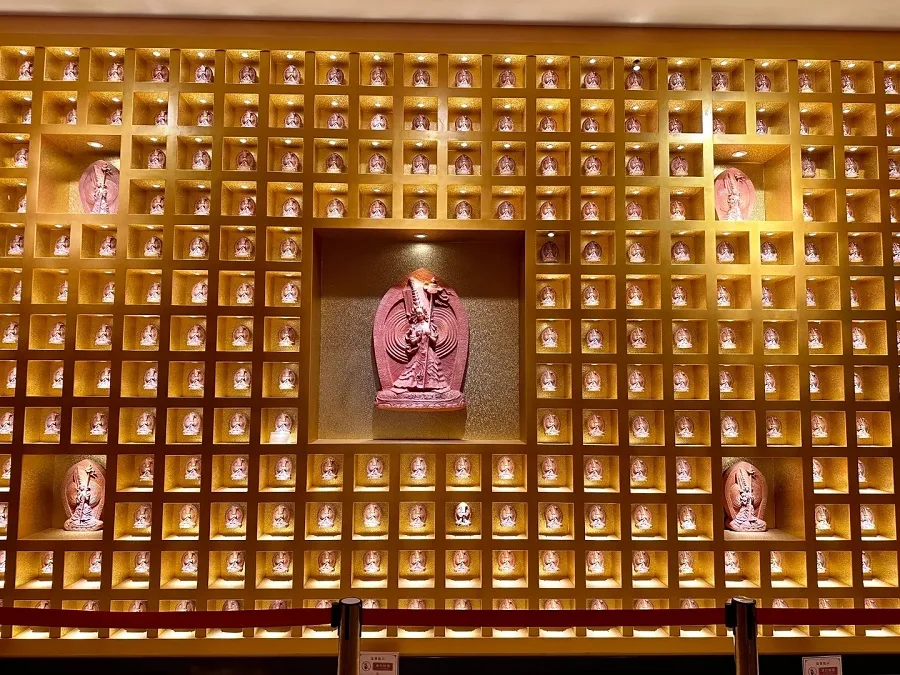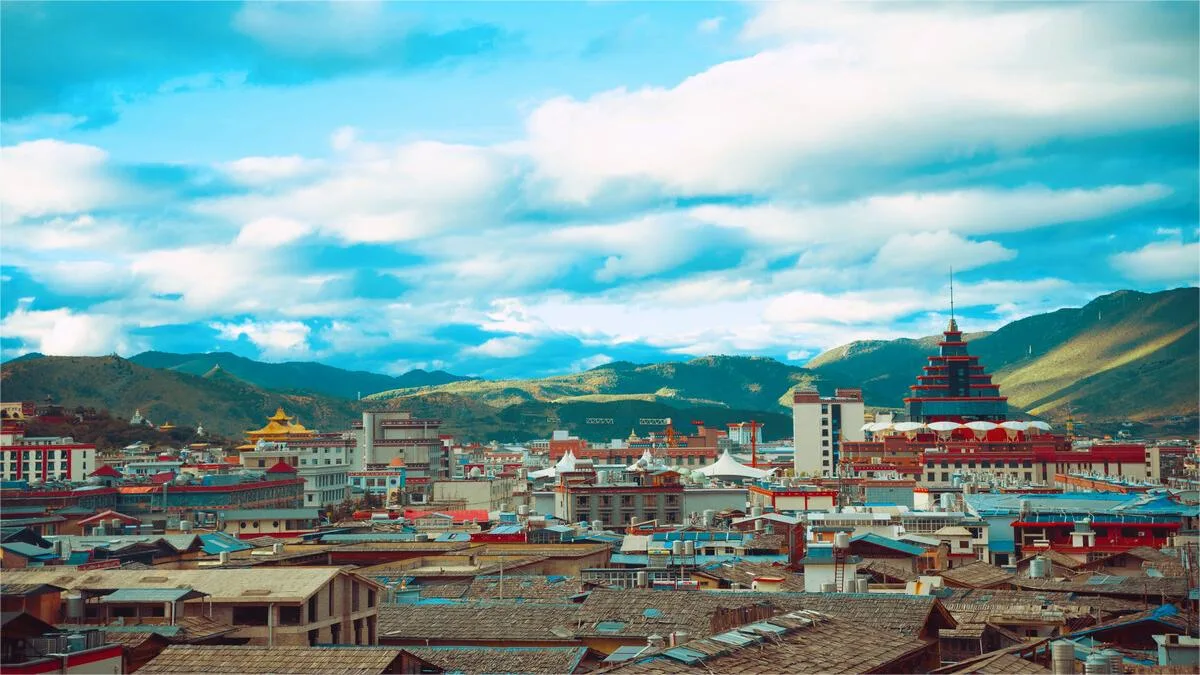Dukezong Ancient Town (独克宗古城) stands as China’s largest and best-preserved Tibetan residential cluster. Its origins trace back to the Tang Dynasty, specifically during the reigns of Tang Yifeng and Diaolu, from 676 to 679 AD. Atop Duigui Mountain, the Tubo people established a fortress named “Dukezong,” a Tibetan term carrying dual meanings: “a castle built on stone” and “moonlight city.” The subsequent construction of the ancient town revolved around this fortress on the mountain peak. In harmony with Dukezong, “Ni Wang Zong,” or “Sunlight City,” was established on a mountaintop by the Naizi River, although its fortress has since disappeared, replaced by a white pagoda.
Legend has it that the concept of building Dukezong was inspired by a living Buddha who, from a distant mountain opposite the ancient town, envisioned Duigui Mountain resembling the Buddhist master Padmasambhava seated on a lotus flower. Consequently, the layout of the ancient town resembles the petals of a lotus flower, forming a spatial pattern shaped by natural changes. During its construction, local materials were predominantly used. Craftsmen discovered that a type of white clay found in the area could be used as a coating for house exteriors. Thus, the whitewashed walls of the ancient town became a defining feature, a style that has endured to this day. On moonlit nights, the silver moonlight enhances the beauty of the white ancient town, earning it the local moniker “Dukezong.”
Table of Contents
- Basic Information
- Location and Transportation
- Highlights of Dukezong Ancient Town
- Vlog about Dukezong Ancient Town
- History of Dukezong Ancient Town
- Attractions near Dukezong Ancient Town
Basic Information
| Estimated Length of Tour | Half a day |
| Ticket Price | Free |
| Opening Hours | 24 hours a day throughout the year |
| Telephone Number | 0086-0887-8223310 |
Location and Transportation
Dukezong Ancient Town is located on Kangzhu Avenue in Shangri-La City, Diqing Tibetan Autonomous Prefecture, Yunnan Province, China. It is conveniently situated just 600 meters away from Shangri-La Railway Station. Visitors can reach Dukezong Ancient Town by taking either Bus Route 14 or Route 3 to the Jiantang Health Center bus stop. From there, it’s a short walk to the entrance of the ancient town.
Highlights of Dukezong Ancient Town
Witness to the Anicent Past

Dukezong Ancient Town, nestled against the contours of the mountains, features uneven stone-paved streets that bear witness to its ancient past. As of 2021, the deep imprints of horse hooves on the cobblestone roads serve as remnants of the caravans that once traversed the ancient Tea Horse Road. For these caravans, Dukezong Ancient Town served as a vital hub and the first stop after entering Tibet, offering a relatively comfortable stretch of the journey.
Local Customs

At the heart of the ancient town lies Moonlight Square, surrounded by quaint Tibetan-style wooden houses where local residents lead peaceful lives. To the west of the square stands Duigui Mountain, also known as Turtle Mountain Park, where the Baiji Monastery and a Guinness World Record-holding giant prayer wheel sits atop the peak. It requires the collective effort of three individuals to set it in motion. Adjacent to Turtle Mountain Park on the northwest side is Sifang Street, where every evening, traditional Tibetan Guozhuang dances attract a large number of visitors. If fortunate enough to witness this spectacle, one should immerse themselves in the joyous atmosphere.
Cultural Attractions

Nestled to the north of Moonlight Square is the courtyard housing the Deqen State Red Army Long March Museum. At its entrance stands the central town hall, also known as the Tibetan Sutra Hall, a Qing Dynasty-era structure blending Han, Tibetan, and Naxi architectural styles, offering considerable aesthetic appeal. To the south of the Long March Museum lies the Deqen State Museum, which showcases artifacts from the Neolithic period and exhibits on Tibetan traditional medicine, providing an insightful glimpse into the region’s cultural heritage.
Vlog about Dukezong Ancient Town
History of Dukezong Ancient Town
Dukezong Ancient Town has a rich history dating back over 1,300 years. It was first established during the Tang Dynasty in 634 AD, when the Tubo regime occupied the area and built a fortress on present-day Turtle Hill. This fortress, named “Dukezong” (also written as “Dorkzung”), was the earliest form of the town and served as a military outpost rather than a civilian settlement.
During the Yuan Dynasty in 1286, administrative reforms brought the region under central control, and Dukezong became a center of governance. Over the following centuries, the area saw successive control by Tibetan leaders and the Naxi Mu family of Lijiang, who governed Zhongdian (the old name of Shangri-La) for more than a century, shaping the region’s political and cultural landscape.
In 1667, the Mongol army under Gushri Khan occupied Zhongdian and offered it to the Fifth Dalai Lama, turning the area into a sacred land. A formal religious and administrative center was established atop Turtle Hill, including the construction of a grand temple.
By the Qing Dynasty, Dukezong had become an important trading post and administrative hub, especially after the region was reclaimed by the central government and integrated into Yunnan Province. The town continued to develop, with new walls, streets, and marketplaces being built throughout the 18th and 19th centuries.
In modern times, Dukezong Ancient Town is known for its well-preserved Tibetan architecture and spiritual atmosphere. However, a devastating fire in January 2014 destroyed much of the historic town. After extensive restoration, Dukezong was reopened to the public in 2016, continuing its legacy as a cultural gem of Shangri-La.





